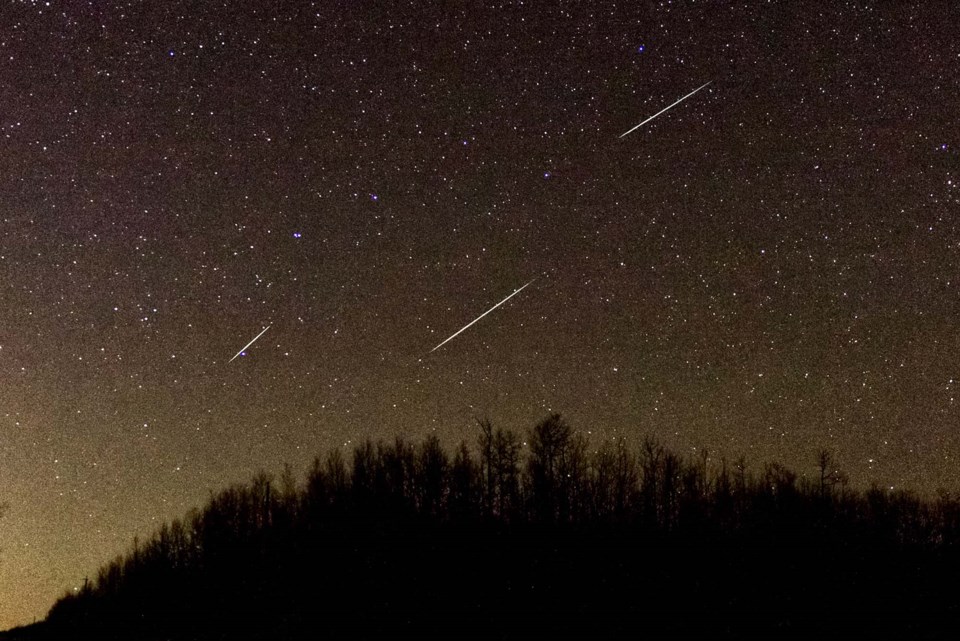Alberta stargazers will be treated with some great balls of fire tonight as the Geminids meteor shower blazes overhead.
The Geminids meteor shower is an annual event that occurs from around mid-November to late December in the skies above Earth, NASA reports. This year, the shower will likely reach its peak on Dec. 14. The shower takes its name from the fact that it appears to originate from the constellation Gemini, which is the pair of bright stars to the upper left of Orion.
The Geminids are one of the strongest meteor showers of the year, said Frank Florian, planetarium and space science manager at the Telus World of Science Edmonton.
“If you’re at the peak time and the radiant (origin point) is right over your head, you can see upwards of 120 meteors per hour.”
This year’s Geminids will peak at about noon St. Albert time, so you’ll have to head to Europe for the best view, Florian said. Still, with a clear night sky, Edmonton-area residents could spy up to 60 tiny stars shooting through the sky on Dec. 13 and 14.
“They can appear anywhere in the sky, but they will always be moving away from the constellation Gemini," Florian said.
St. Albert amateur astronomer Bruce McCurdy said he planned to watch the shower on Wednesday night if the weather co-operated.
“It’s probably the most plentiful meteor shower of the year,” he said, and it’s also in December — a month where long winter nights allow for plenty of stargazing.
Big rock
Meteor showers typically occur when the Earth crosses the debris trail of a comet — a big ball of ice and rock that spews particles as it melts in the sun’s heat. These particles slam into Earth’s atmosphere at tremendous speeds (about 35 km per second for the Geminids, NASA reports) and vaporize, producing trails of light we call meteors.
The Geminids are unusual in that they originate from an asteroid or “rock comet” called 3200 Phaethon, McCurdy said. Discovered in 1983, NASA reports that this asteroid orbits the sun every 1.4 years and is just 5.1 km wide. While it does come close to Earth, it won’t hit us anytime soon; the closest it got was about 26 times the moon’s distance away back in 2017, and it won’t get that close again until 2093.
Florian said meteor showers like the Geminids help scientists refine their understanding of orbits and the composition of the universe. If you want to see the Geminids, he and McCurdy said you should go to a dark, rural area late on Dec. 13 or 14 and look up. If you miss the Geminids, you can always catch the Quandrantids, which fall from Dec. 26 to Jan. 16 and peak on around Jan. 4.



